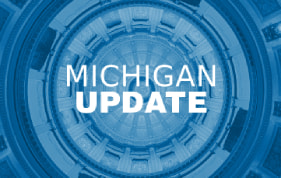Be sure to register for HMA’s 2022 Conference by Monday, July 11, to get the special early bird rate of $1,695 per person. After July 11, the rate is $1,895.
Nearly 40 industry speakers, including health plan executives, state Medicaid directors, and providers, are confirmed for HMA’s The New Normal: How Medicaid, Medicare, and Other Publicly Sponsored Programs Are Shaping the Future of Healthcare in a Time of Crisis conference, October 10-11, at the Fairmont Chicago, Millennium Park.
In addition to keynote sessions featuring some of the nation’s top Medicaid and Medicaid executives, attendees can choose from multiple breakout and plenary sessions on behavioral health, dual eligibles, healthcare investing, technology-enabled integrated care, social determinants of health, eligibility redeterminations, staffing, senior care, and more.
There will also be a Pre-Conference Workshop on The Future of Payment Reform: Delivering Value, Managing Risk in Medicare and Medicaid, on Sunday, October 9.
Visit our website for complete details: https://conference.healthmanagement.com/ or contact Carl Mercurio. Group rates and sponsorships are available. The last HMA conference attracted 500 attendees.
State Medicaid Speakers to Date (In alphabetical order)
- Cristen Bates, Interim Medicaid Director, CO Department of Healthcare Policy & Financing
- Jacey Cooper, Medicaid Director, Chief Deputy Director, California Department of Health Care Services
- Kody Kinsley, Secretary, North Carolina Department of Health and Human Services
- Allison Matters Taylor, Medicaid Director, Indiana
- Dave Richard, Deputy Secretary, North Carolina Medicaid
- Debra Sanchez-Torres, Senior Advisor, Centers for Disease Control and Prevention
- Jami Snyder, Director, Arizona Health Care Cost Containment System
- Amanda Van Vleet, Associate Director, Innovation, NC Medicaid Strategy Office, North Carolina Department of Health & Human Services
Medicaid Managed Care Speakers to Date (In alphabetical order)
- John Barger, National VP, Dual Eligible and Medicaid Programs, Humana, Inc.
- Michael Brodsky, MD, Medical Director, Behavioral Health and Social Services, L.A. Care Health Plan
- Aimee Dailey, President, Medicaid, Anthem, Inc.
- Rebecca Engelman, EVP, Medicaid Markets, AmeriHealth Caritas
- Brent Layton, President, COO, Centene Corporation
- Andrew Martin, National Director of Business Development (Housing+Health), UnitedHealth Group
- Kelly Munson, President, Aetna Medicaid
- Thomas Rim, VP, Product Development, AmeriHealth Caritas
- Timothy Spilker, CEO, UnitedHealthcare Community & State
- Courtnay Thompson, Market President, Select Health of SC, an AmeriHealth Caritas Company
- Ghita Worcester, SVP, Public Affairs & Chief Marketing Officer, UCare
- Mary Zavala, Director, Enhanced Care Management, L.A. Care Health Plan
Provider Speakers to Date (In alphabetical order)
- Daniel Elliott, MD, Medical Director, Christiana Care Quality Partners, eBrightHealth ACO, ChristianaCare Health System
- Taylor Nichols, Director of Social Services, Los Angeles Christian Health Centers
- Abby Riddle, President, Florida Complete Care; SVP, Medicare Operations, Independent Living Systems
- David Rogers, President, Independent Living Systems
- Mark Sasvary, Chief Clinical Officer, CBHS, IPA, LLC
- Jim Sinkoff, Deputy Executive Officer, CFO, SunRiver Health
- Tim Skeen, Senior Corporate VP, CIO, Sentara Healthcare
- Efrain Talamantes, SVP & COO, Health Services, AltaMed Health Services Corporation
Featured Speakers to Date (In alphabetical order)
- Drew Altman, President and CEO, Kaiser Family Foundation
- Cindy Cota, Director of Managed Medicaid Growth and Innovation, Volunteers of America
- Jesse Hunter, Operating Partner, Welsh, Carson, Anderson & Stowe
- Bryant Hutson, VP, Business Development, MedArrive
- Martin Lupinetti, President, CEO, HealthShare Exchange (HSX)
- Todd Rogow, President, CEO, Healthix
- Joshua Traylor, Senior Director, Health Care Transformation Task Force
- James Whittenburg, CEO, TenderHeart Health Outcomes
- Shannon Wilson, VP, Population Health & Health Equity, Priority Health; Executive Director, Total Health Care Foundation



